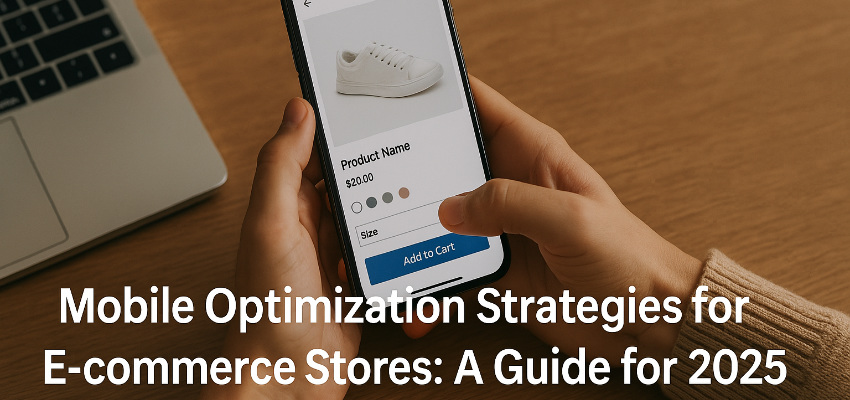Show:
SaaS Integration Strategies for Seamless Connections and Enhanced Performance
You’re running an average enterprise organization in the heart of a bustling city. Your team diligently utilizes an array of SaaS applications to fuel productivity. One day, you’re in your local coffee shop and suddenly realize a crucial piece of information from your human resources information system (HRIS) is missing in the board meeting report. A nightmare scenario? Maybe not.

According to Gartner, by 2025, up to 95% of medium and large organizations will have adopted a multi-cloud or hybrid IT strategy, up from 30% in 2021. It’s clear that the SaaS software landscape and the reliance on cloud data are rapidly expanding. However, the path to seamless SaaS application integration is often riddled with integration challenges.
So how does one ensure seamless connections and enhanced performance in contract management? This blog post will guide you through overcoming SaaS integration challenges in contract management, providing valuable insights into how business apps sharing data can operate in harmony, ensuring your enterprise’s top-tier performance in contract management.
Understanding SaaS Integration
SaaS integration has revolutionized the way businesses operate by offering scalable and cost-effective solutions to various challenges. It refers to linking your SaaS applications with other cloud applications or any on-premise systems your organization uses. It involves establishing seamless connections between different SaaS software services to enable data flow and functionality across various platforms. Businesses can achieve better collaboration, data management, and automation by integrating these applications.
One of the key advantages of SaaS integration is that it allows organizations to leverage the offerings of multiple SaaS providers. For example, Google Workspace Suites is an excellent example of simple SaaS integration. Google owns various applications like Gmail, Google Drive, Google Docs, and Google Sheets. Users can seamlessly work across these applications through integration, enhancing productivity and collaboration. By integrating applications from different SaaS providers, businesses can create a unified ecosystem that simplifies workflows and enhances user experiences.
It’s important to note that SaaS integration differs from app integration and API integration. App integration focuses on connecting different applications to exchange data and enable collaboration, while API integration revolves around establishing communication between different systems. SaaS integration, on the other hand, specifically deals with enabling cross-platform functionality and data flow.
To achieve successful SaaS integration, businesses should carefully evaluate their needs and choose the right tools and integration platform. They should prioritize solutions that offer API integration and connectors for smooth communication between applications. Security, scalability, and compatibility are essential factors when selecting integration tools.
SaaS integration becomes more manageable once we comprehend the processes behind SaaS development. As we navigate the dynamic business landscape, SaaS integration is emerging as a robust tool that helps businesses streamline their operations and carve a path to success. Deepening our knowledge about SaaS development can enhance our strategies for SaaS integration and boost business performance.

Key Benefits of SaaS Integration
SaaS integration offers several key benefits for businesses across different industries. By connecting SaaS application integration into their existing workflows, organizations can unlock the full potential of their software ecosystem. Let’s explore some key benefits of SaaS integration beyond conventional advantages.
- Enhanced Transparency:
SaaS companies provide organizations with a consolidated view of their data, ensuring transparency across various applications. By connecting different SaaS applications, businesses can centralize data and gain a comprehensive understanding of their operations. This transparency allows for better decision-making, as insights derived from integrated data provide a holistic view of customer behavior, market trends, and internal processes. With real-time visibility into data, businesses can make informed decisions, identify areas for improvement, and drive strategic initiatives.
- Improved Operational Efficiency and Quality:
SaaS integration streamlines business processes, increasing operational efficiency and improving quality. By automating workflows and eliminating manual data entry, organizations can save time and reduce the risk of human error. With seamless data transfer between applications, consistency, and accuracy are maintained throughout the system. This leads to streamlined operations, reduced redundancies, and enhanced productivity. Businesses can deliver higher-quality products or services by optimizing processes and maintaining data integrity, resulting in improved customer satisfaction and increased competitive advantage.
- Enhanced Customer and Employee Experience:
It improves customer and employee experiences. Organizations can provide a unified view of customer interactions and preferences by integrating customer relationship management (CRM) systems with other business apps. This enables personalized and targeted communication, improving customer satisfaction and loyalty. Additionally, integrating with other applications simplifies employee onboarding, training, and performance management, enhancing employee experience. Seamless data integration ensures employees can access the information they need, fostering collaboration and empowering them to deliver exceptional customer experiences.
- Save Time & Cost:
SaaS integration is a game-changer in trimming down the hours spent on manual data entry and repetitive tasks. By seamlessly connecting SaaS applications, businesses can streamline processes, bid farewell to redundant efforts, and recapture precious time. This newfound efficiency also translates into substantial cost savings by reducing the reliance on labor-intensive tasks. With operations running smoothly, employees can redirect their energy towards more valuable endeavors, nurturing innovation and fostering overall growth.
- Scalability and Integration:
The beauty of SaaS integration lies in its remarkable ability to adapt effortlessly to your business’s evolving needs. Whether you’re expanding operations or pivoting to navigate changing market conditions, SaaS companies offer the agility to add or remove applications on the fly. This seamless scalability ensures a smooth transition, sparing you from workflow disruptions or unnecessary expenses. Moreover, integration solves different business processes by demolishing data silos, facilitating real-time information, and fostering collaboration across departments and systems. This interconnectedness creates a cohesive and elegant business ecosystem primed to respond to emerging challenges gracefully.
- Stay Current with New Releases:
SaaS integration ensures that your business stays on the cutting edge by promptly accessing the latest releases and updates from SaaS companies. By keeping your software versions up to date, you gain access to enhanced features, fortified security measures, and critical bug fixes offered by the providers. This commitment to staying current allows you to optimize your operations, leveraging state-of-the-art technologies to maintain a formidable competitive edge. With a focus on continuous improvement and innovation, your organization can elevate its capabilities and deliver exceptional products or services that captivate and delight your esteemed customers.

Best Practices for SaaS Integration
Integrating SaaS applications can be complex, but following best practices can help organizations navigate the challenges and maximize the benefits. By adhering to these practices, businesses can ensure smooth and efficient SaaS integration. These practices include utilizing well-defined API integrations for seamless communication between applications, implementing effective data mapping and transformation techniques to align data structures and formats, enabling real-time data syncing to maintain consistency across systems, and establishing robust error handling and monitoring mechanisms. These practices ensure a standardized and reliable integration process, enhancing collaboration, data accuracy, and operational efficiency. Here are some key practices to consider:
- API-Based Integrations
API-based integrations are a fundamental aspect of successful SaaS integration. APIs act as the bridge that enables seamless communication and data exchange between different applications. Businesses can establish standardized and reliable connections between SaaS applications by leveraging well-defined APIs. APIs provide clear instructions and protocols for how applications can interact and share data freely, ensuring smooth integration. They facilitate the transfer of information in a secure and controlled manner, allowing organizations to streamline processes and improve efficiency. Implementing API-based integrations ensures that companies can unlock the benefits of interconnected systems, enhancing productivity and enabling data exchange in a structured and efficient manner.
- Data Mapping and Transformation
Data mapping and transformation are vital steps in the SaaS integration process. Organizations must carefully analyze the data requirements of each application involved in the integration and map the data fields accordingly. This involves aligning data structures, formats, and semantics to ensure seamless data flow between applications. Data mapping helps clearly understand how data should be exchanged and utilized across systems. Additionally, data transformation may be necessary to convert data into a compatible format for the receiving application. This ensures data integrity and accuracy during the integration process. By effectively mapping and transforming data, organizations can ensure a smooth flow of information between applications, eliminate data inconsistencies, and enable meaningful insights.
- Real-Time Data Syncing
Real-time data syncing is a critical practice in SaaS integration that ensures data consistency and accuracy across integrated applications. With real-time syncing, changes made in one application are immediately reflected in others, enabling a synchronized and up-to-date data view. By establishing real-time data syncing, organizations can avoid discrepancies, improve collaboration, and make informed decisions based on current information. Real-time data syncing enables seamless data flow between systems, enhancing efficiency and facilitating better communication and collaboration across departments. This practice promotes agility and responsiveness, allowing businesses to adapt quickly to changes and make timely decisions based on accurate and real-time data.
- Error Handling and Monitoring
Error handling and monitoring are essential aspects of SaaS integration to ensure smooth operation and maintain data integrity. By implementing robust error-handling mechanisms, organizations can detect, report, and address errors that may occur during the integration process. Effective error handling involves identifying potential issues, error detection, and prompt resolution to minimize disruptions. Monitoring integration workflows and data transfers on an ongoing basis helps identify patterns, optimize performance, and prevent errors. With proper error handling and monitoring in place, organizations can ensure a seamless integration experience, minimize downtime, and maintain the integrity and reliability of the integrated systems.

Common SaaS Integration Challenges
SaaS integration can present various challenges that organizations must tackle for a successful integration process. Some common challenges will be discussed in detail. It includes ensuring the security of data during integration, addressing compatibility issues between applications, scaling systems as the business grows, and maintaining optimal performance can be complex. However, by understanding and proactively addressing these challenges, businesses can streamline their integration efforts, protect data, and achieve a seamless flow of information. Overcoming these hurdles is crucial for optimizing the benefits of SaaS integration and ensuring a smooth operational experience.
- Data Security and Privacy
As we dive into the SaaS integration, it’s important to recognize one of its major hurdles: data security and privacy. An average enterprise organization relies heavily on cloud computing services, but sharing sensitive business data across so many SaaS applications can make it susceptible to data breaches. Furthermore, since the software provider controls cloud data rather than the organization, data control becomes a pertinent issue. These data silos can jeopardize customer experience and require advanced technical knowledge to resolve. This poses a significant challenge, particularly to businesses that need more resources for expensive technical resources.
Here are the potential issues caused by the challenges in data security:
- Data breaches
- Misuse of proprietary information
- Increased operational costs
- Application Compatibility
A significant challenge with SaaS integration is ensuring app integration compatibility. In a connected enterprise, business apps, SaaS applications, and other technology like on-premise systems must work in unison. Yet, with so many SaaS apps, there’s an inherent risk of conflicts and incompatibility. Native integrations may not work with every software distribution model, causing app integration problems that could lead to manual data entry or human error. Integration solutions must be capable of bridging these differences, requiring both integration capabilities and deep technical expertise.
These are potential problems emerging from the challenges associated with scalability and performance:
- Inefficient business processes
- Manual data entry errors
- Limited data sharing
- Scalability and Performance
Scalability and performance are key considerations in the SaaS ecosystem. SaaS companies should efficiently handle increased loads without impacting the user experience or causing downtime. However, not every integration platform is designed with these factors in mind. The choice of a cloud hosting provider can impact performance. Moreover, integrating cloud-based programs with on-premise systems could lead to potential data silo issues, affecting scalability. These integration challenges emphasize the need for businesses to create their own integration flows, ensure robust API integration, and actively manage vendor relationships to ensure seamless scalability and optimum performance.
These are some issues caused by application compatibility:
- Resource inefficiencies
- Performance slowdowns
- Revenue disruptions
Tools and Solutions for SaaS Integration
Though SaaS integration can seem challenging, the right tools and technologies can simplify the process significantly. Businesses can effectively bridge the gap between different SaaS companies by using powerful solutions like iPaaS platforms, middleware solutions, custom integration development, and partnering with experienced Managed Service Providers (MSPs). These tools, along with the expertise of MSPs in SaaS integration, help overcome integration challenges and enhance business processes, control data, and the overall customer experience within the connected enterprise.
- iPaaS Platforms
iPaaS (Integration Platform as a Service) platforms have emerged as powerful business tools, simplifying the process of integrating diverse SaaS applications. These integration platforms are designed for cloud service, and address many integration challenges, such as data silos, application compatibility, and scalability.
At their core, iPaaS platforms provide a framework for connecting different cloud-based programs and on-premise systems, allowing businesses to create their integration flows. They enhance data sharing between various business applications, eliminating the need for time-consuming manual data entry. This improved data integration can boost the efficiency of business processes and reduce the risk of human error.
Moreover, iPaaS platforms often come with pre-built connectors for popular SaaS apps, further easing integration. This reduces the need for expensive technical resources and in-depth technical expertise. The benefits of SaaS integration through iPaaS platforms are palpable in improved data control, streamlined business processes, and enhanced customer experience.
Top iPaaS platforms that have gained prominence in the market include
- MuleSoft
- Dell Boomi
- Jitterbit
- Zapier
They have all established their prowess in providing comprehensive and effective integration solutions.
- Middleware Solutions
In the vibrant SaaS ecosystem, middleware solutions have taken center stage as a prominent tool for SaaS integration. Middleware serves as the connective tissue between disparate SaaS companies, facilitating seamless data sharing and improving the coordination of business processes.
These solutions act as a translator between different SaaS apps, converting data into a format easily understood and processed by other applications. This capability is beneficial when native integrations are lacking or non-functional, circumventing application compatibility issues and minimizing potential data silo problems.
Furthermore, middleware solutions allow businesses to retain control over their data while ensuring security and privacy, a challenge in a landscape marked by so many SaaS companies. They also alleviate the need for expensive technical resources or advanced technical knowledge, making the SaaS integration process more straightforward and accessible.

Some middleware solutions that businesses can consider for SaaS integration include:
- IBM WebSphere
- Oracle Fusion Middleware
- Red Hat JBoss Middleware
- Microsoft.NET Framework
- Apache Kafka
- Custom Integration Development
Custom Integration Development is another tool in the domain of SaaS integration, providing tailor-made solutions to meet specific business requirements. This approach gives businesses more control over their SaaS apps’ interactions, creating an integration platform that aligns with their business processes and objectives.
Developing custom integrations involves leveraging application programming interfaces (APIs) to build unique connectors between various SaaS applications. This facilitates data sharing between disparate business applications, streamlining operations and enhancing the overall customer experience. Custom integration also solves application compatibility issues that off-the-shelf middleware solutions may not address.
Moreover, custom integration development can help overcome scalability and performance challenges, as the integrations are built with the business’s unique growth trajectory and resource needs in mind. However, this approach may require a more substantial investment in terms of time and technical expertise.
Top companies offering custom integration development services include:
- Vention
- Accenture
- Itransition
- Kanda Software
- RadixWeb
- Managed Service Providers
Managed Service Providers (MSPs) can also be pivotal in facilitating SaaS integration for businesses. Organizations can leverage their expertise and experience in handling complex integration projects. MSPs can offer end-to-end solutions, from assessing integration needs to selecting the right tools to implement and manage the integration process.
MSPs can implement reliable data protection strategies for their clients’ SaaS applications, ensuring that sensitive business data is well-protected and recoverable in case of unexpected incidents. One notable solution that MSPs can utilize to address data security concerns and safeguard against potential data breaches is the NAKIVO backup solution for MSPs.
Moreover, working with MSPs allows businesses to scale their SaaS integration efforts as needed. Whether a company is starting with a few SaaS applications or looking to expand its integration scope, MSPs can tailor their services to meet specific requirements and growth goals.
Top Managed Service Providers (MSPs) that have good experience in SaaS integration:
- Capgemini
- Cognizant
- Wipro
- HCL Technologies
Related Questions
- What are SaaS Characteristics?
SaaS companies exhibit several key characteristics:
- Access is typically granted on a subscription basis, removing the need for upfront software purchases.
- SaaS eliminates the customer’s need for additional hardware installation, easing the setup process.
- SaaS providers handle updates automatically, ensuring customers always use the latest version without intervention. These characteristics simplify software deployment and maintenance, making SaaS an attractive option for many businesses.
- How can SaaS Integration Enhance Performance?
SaaS integration enhances performance by automating data transfer between applications, reducing manual data entry, and minimizing errors. This boosts efficiency, enhances the customer experience, and allows organizations to make data-driven decisions.
- What are the Different Types of SaaS Integration?
SaaS integration varies based on the types of applications being linked. Here’s a look at some common types:
Email and Social Collaboration Integration: This connects your email system and business tools, allowing easy data sharing between platforms. This integration can enhance team collaboration, streamline communication, and increase productivity.
Customer Relationship Management (CRM) Integration: It links your CRM platform with other SaaS apps. It can improve customer interactions by providing real-time data updates, accurate customer profiles, and automated workflows.
Enterprise Resource Planning (ERP) Integration: It facilitates real-time data exchange, improving resource allocation, financial management, and overall business efficiency.
Human Resources Management (HRM) Integration: It can streamline HR tasks like recruitment, employee data management, and payroll, creating a more efficient HR department.
Content Management Integration: This type of SaaS integration connects your content management system with other applications.
- How do Organizations Utilize SaaS?
SaaS is used by organizations via internet access, typically through a web browser, allowing software use from virtually any device. The SaaS provider manages servers, databases, and the application software itself. Organizations usually pay a subscription fee for this service, often every month, to gain access to the application. This approach offers flexibility and ease of use for businesses.
- Why do I need a SaaS Integration Strategy?
- Data Consolidation: SaaS Integration Strategies help consolidate data from various sources, reducing data silos and enhancing data accessibility.
- Enhanced Efficiency: They streamline business operations by automating data exchange between different applications, reducing manual work and the potential for errors.
- Improved Customer Experience: With integrated systems, customer information is more accurate and readily available, improving customer service.
- Scalability: These strategies allow businesses to add or change applications as they grow quickly and their needs evolve.
- Cost Savings: With SaaS integration, organizations can reduce the costs associated with maintaining separate systems, manual data entry, and error correction.
Conclusion
We’re all living in a digital world that’s getting more digital by the second. It’s like we’re all just learning to surf this big wave of tech. For businesses, that means hopping on board the SaaS train. Considering things like keeping your data secure and getting all those different applications to play nicely together can give you a headache. Imagine smoother day-to-day operations and customers who are just over the moon about how well things are going.
You’ve got things like iPaaS platforms, middleware solutions, and custom integrations stepping up to bat for you. So, instead of considering SaaS integration as another thing on the IT to-do list, why not see it for what it really is? It’s a smart move that can help your business become more connected, work more efficiently, and stay ready for whatever the future throws at you. So, go on, give SaaS integration a go.

 Return to Previous Page
Return to Previous Page








